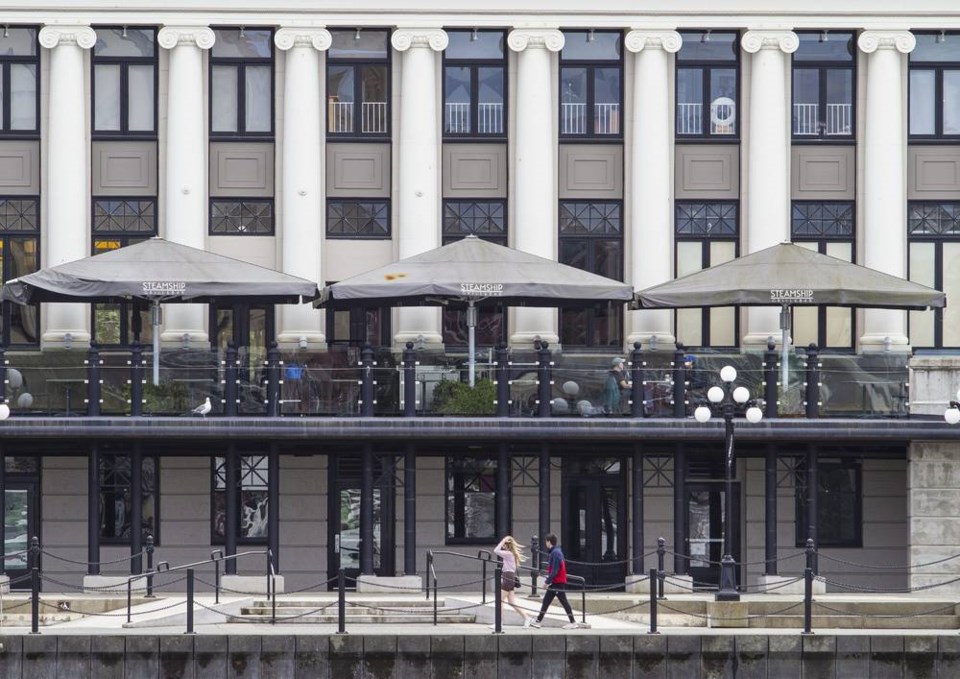Museum’s best site is the old CP building
All of us involved with the Maritime Museum of B.C. are greatly encouraged by the support and suggestions from the community that have appeared on this page.
Since withdrawing from the concept of a museum located in Langford, our new board of directors is assessing a range of opportunities to locate the museum in downtown Victoria, ideally on a waterfront site somewhere between Ogden Point and the Capital Iron area.
Times Colonist readers and a recent editorial have suggested a closer relationship with local First Nations. We recognize and respect the need to advance this priority.
We are also strengthening connections with organizations including the City of Victoria, the provincial government, the Royal B.C. Museum, the Greater Victoria Harbour Authority and others.
Specific locations such as the so-called Northern Junk buildings on Wharf Street have been suggested. Unfortunately, even if the site were available, it is likely too small for the museum’s large collection and it would be extraordinarily expensive to construct a purpose-built structure, while retaining the heritage features of the existing buildings.
It is our conclusion that the best possible option is to be located in the already existing and seismically upgraded historic Canadian Pacific Steamship building, a structure right on the harbour, with a genuine maritime pedigree of its own.
Co-locating in this building with other tenants such as the Bateman Gallery would create cultural synergy and an added attraction for visitors.
In short, the museum’s future is in Victoria. We greatly appreciate the support, ideas and goodwill in the community.
Jamie Webb, president
Maritime Museum of B.C.
Australia beats B.C. in fighting COVID
According to Dr. Shaun Peck, “B.C.’s pandemic response will be a model for the world” and has been far preferable to Australia’s approach.
According to the most recent statistics and subject to a final accounting when it’s all over, about twice as many B.C. residents have died so far from COVID in our province of 5.1 million people than have died from COVID in that entire country of 25.8 million.
Norman Spector
Victoria
Toxic Daphne one more invasive species
While we are on the topic of invasives, the Saanich Peninsula and points south are being overrun by the toxic Daphne laureola.
This wretched plant has berries that birds eat, and as a result, the seeds are carried far and wide, making this very difficult to eradicate.
Also, the roots are long and require strength to dislodge. Merely cutting the plant does not kill it.
With over a decade of Daphne-pulling to my credit, I have learned that in late July and August during our annual drought, the roots seem to shrink and even large plants become relatively easy to pull.
During the hot season, I can pull plants as tall as myself. Of course, one has to keep up patrolling the woods and verges so as to find and yank the hydra-like sprouts.
Eradicating it will take years.
And while I’m on my soapbox: Please note that English ivy (Hedera helix) will kill trees if left to itself. It chokes off the flow of sap, the circulation of the tree.
If you like the look of ivy climbing up your tree, keep it cut in such a way that it does not encircle the tree.
Even the grey squirrel, which so many people regard as cute, is destructive.
It is a serious farm pest, damaging far more fruit than it actually eats, and it will remove every last nut from a tree the moment they ripen. They also eat baby songbirds and kill the native red squirrels.
As more people lose touch with the natural world around them, they fail to understand the ramifications of their actions.
Willi Boepple
Victoria
Submarines keep us sovereign at sea
Submarines are perhaps the most misunderstood national asset necessary in the defence of Canada. Canada is a maritime nation with the longest coastline in the world, and in order to be sovereign at sea, the government must have the ability to operate on, over and under the ocean.
HMCS Corner Brook was not under repair for 10 years. After being damaged in a training accident, the boat was put in storage and waited in line behind the other three boats going through the regular cycle of operation, maintenance and extended work period.
The aim is to keep a boat operational on each coast, one for training and the fourth in maintenance. A submarine is a complex system that can be likened to a space shuttle. Whether you are in outer space or inner space, all systems must be fail-safe, as help is not nearby.
Operationally, a single submarine can keep watch over 125,000 square miles of ocean for an extended period without anyone knowing it’s there. Because Canada operates underwater, we participate with other nations in the submerged traffic system.
It is instructive to know that after maintenance, it is standard practice to initially move a ship or submarine with a tug before the engines are engaged with a full crew.
While it took some time for the decision to be made, Canada acquired four submarines for the price of three had they been built new. The Royal Australian Navy’s experience with its Collins Class boats is worth reviewing.
Readers who are interested might search the internet (“Canada Submarines Deal of the Century”) for a scholastic commentary on the history of the program.
Gerald W. Pash
Victoria
SEND US YOUR LETTERS
• Email letters to: [email protected]
• Mail: Letters to the editor, Times Colonist, 201-655 Tyee Rd., Victoria, B.C. V9A 6X5
• Submissions should be no more than 250 words; subject to editing for length and clarity. Provide your contact information; it will not be published.



